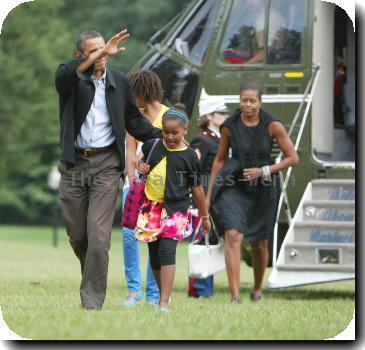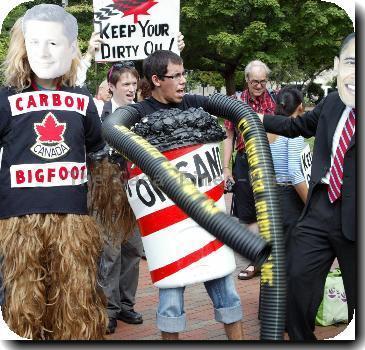Ohio peace museum campaigns for a chunk of Obama’s $1.4M Nobel cash award
By James Hannah, APTuesday, October 27, 2009
Ohio peace museum angling for Obama’s Nobel money
DAYTON, Ohio — A fledging museum devoted to the pursuit of peace is hoping its mission is just what President Barack Obama is looking for when he decides what to do with the $1.4 million cash award that comes with his Nobel Peace Prize.
Volunteers and supporters of the Dayton International Peace Museum are writing letters to Obama in hopes of swaying him to make a donation. Dayton Mayor Rhine McLin says city leaders also will reach out to the president. The museum’s founders are also urging state officials to make an appeal.
Obama has said he will travel to Oslo, Norway, to accept the award in December, and plans to donate the cash to charity. White House press secretary Robert Gibbs said this month that Obama has not decided who will get the money.
Museum officials say they would use the prize money to expand their peacemaking and conflict-resolution programs in elementary schools and among young first-time offenders and at-risk youths.
The beating death of a Chicago honor student last month attracted Obama’s attention. The president sent Attorney General Eric Holder and Education Secretary Arne Duncan to the city to meet with students, parents and administrators. Federal officials also promised support efforts to stop youth violence nationwide.
The idea for the Dayton museum was born at a bus-station diner in 2003 when Christine Dull and her husband, Ralph Dull, longtime peace activists who live in the Dayton area, were on their way home from New York City after visiting the United Nations.
“All of a sudden I said, ‘It’s high time Dayton had a peace museum,’” Christine Dull recalled. She said the couple were inspired by the realization that there were thousands of war museums and memorials throughout the world, but few peace museums.
The Dayton museum opened in 2005 in a stately 1877 Italianate mansion. The Dulls and several others used their own money to start it, along with a $10,000 grant from a local organization that supports grass-roots groups that promote social change. The museum is nonpartisan and not affiliated with any church or religion.
The museum sends volunteers to schools to urge students to make nonviolent choices, sponsors a summer peace camp and puts on a peace festival. Its former director has visited Pakistan, India and Iran multiple times to meet with peace groups and schools.
“I believe there is a critical mass for good in the world now. And we want to be part of that,” Christine Dull said.
Some peace organizations are flourishing.
The United States Institute of Peace, a government-funded, independent group that works to prevent and resolve conflicts around the world, recently celebrated its 25th anniversary. It has grown from three employees to around 250 and is building a new headquarters on the national mall in Washington near the Lincoln Memorial, giving it high visibility.
“It’s a symbol of our nation’s commitment to peace-building,” said spokeswoman Lauren Sucher.
Richard Deats, former executive director of the U.S. branch of the Nyack, N.Y.-based Fellowship of Reconciliation, has followed, lectured and written about the peace movement for years. He said a peace museum is a physical sign of humanity’s desire for peace and called the Dayton museum “significant.”
“It’s very important as a cultural landmark where peace is being studied,” Deats said.
Photos and biographies of Mahatma Gandhi and Nobel Peace Prize winners, including Mother Teresa, Nelson Mandela and Martin Luther King Jr., hang on the Dayton museum’s walls. Shelves are lined with books on peace. One room is devoted to the United Nations. Another resembles a school classroom with posters on how to deal with bullies.
One exhibit includes photos from the World War II atomic bombings of Hiroshima and Nagasaki, Japan, and poems written by survivors.
“There are a couple of generations that have no idea what nuclear bombs can do, and we think they need to be educated on that,” Christine Dull said.
The Dulls have had a passion for peace nearly all of their adult lives.
Ralph grew up in the Church of the Brethren, which historically has taken a strong stance for pacifism. He was a conscientious objector during the Korean War, working for two years in the slums of Baltimore instead of serving in the military.
In 1983, the couple began traveling to the Soviet Union on friendship trips. In 1989, they lived in a collective farm village there while two Soviet farmers worked on their farm in Ohio.
“We went for friendship purposes because we felt that no matter what our governments were doing, we thought that the people should get to know each other,” Christine Dull said.
Over the years, the Dulls have taken part in countless peace rallies and vigils.
When peace talks between leaders of the war-torn Balkans were held at nearby Wright-Patterson Air Force Base in 1995, Christine played her cello outside the base’s fence line in tribute to Vedran Smailovic, the Sarajevo cellist who became a symbol of courage for playing in the city’s bombarded streets during its siege.
Today, the Dulls are part of a museum that has 75 volunteers and counts former U.N. Ambassador Richard Holbrooke, actor Martin Sheen and singer Willie Nelson as honorary trustees.
The couple often is seen at community events riding in their PeaceMobile, a colorfully painted motor home with an exhibit inside. It is among several such vehicles around the country. Only rarely do the Dulls get a hostile reception, such as the time they asked for permission to join a parade in a local suburb.
“The man yelled at me over the phone and he said, ‘What’s the matter with you, lady? PeaceMobile? Don’t you know we have a war going on?’” Dull said, laughing.
If the museum receives funds from Obama, it wouldn’t be the first time it has gotten peace prize money. In 2005, Holbrooke donated $10,000 of his $25,000 Dayton Peace Award to the museum after he was honored for his role in forging the agreement reached at Wright-Patterson that ended fighting in the Balkans.
Tags: Barack Obama, Celebrity, Celebrity Causes, Charity Fundraising, Dayton, Events, Leisure Travel, Municipal Governments, Nobel Prizes, North America, Ohio, Philanthropy, Recreation And Leisure, Travel, United States

